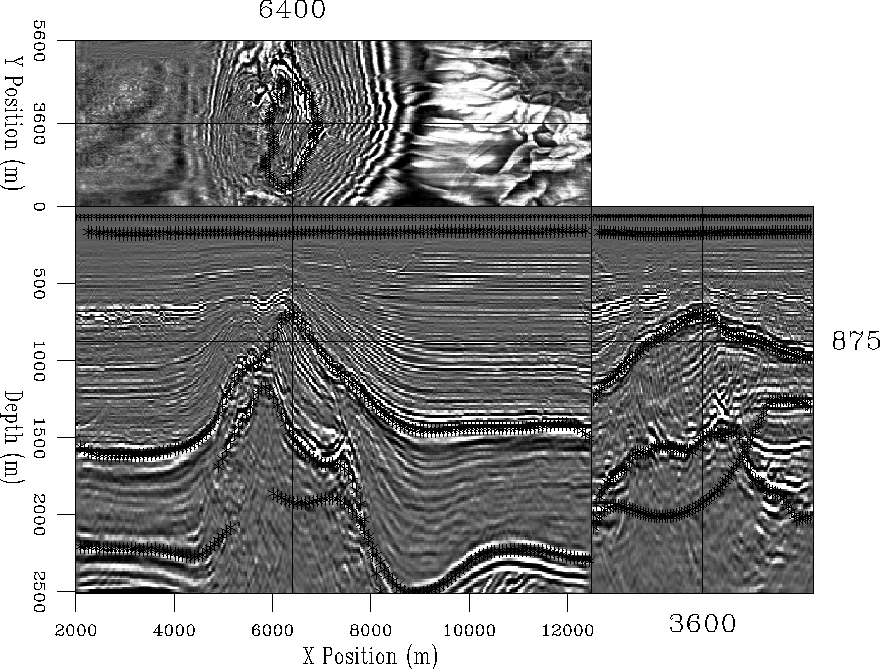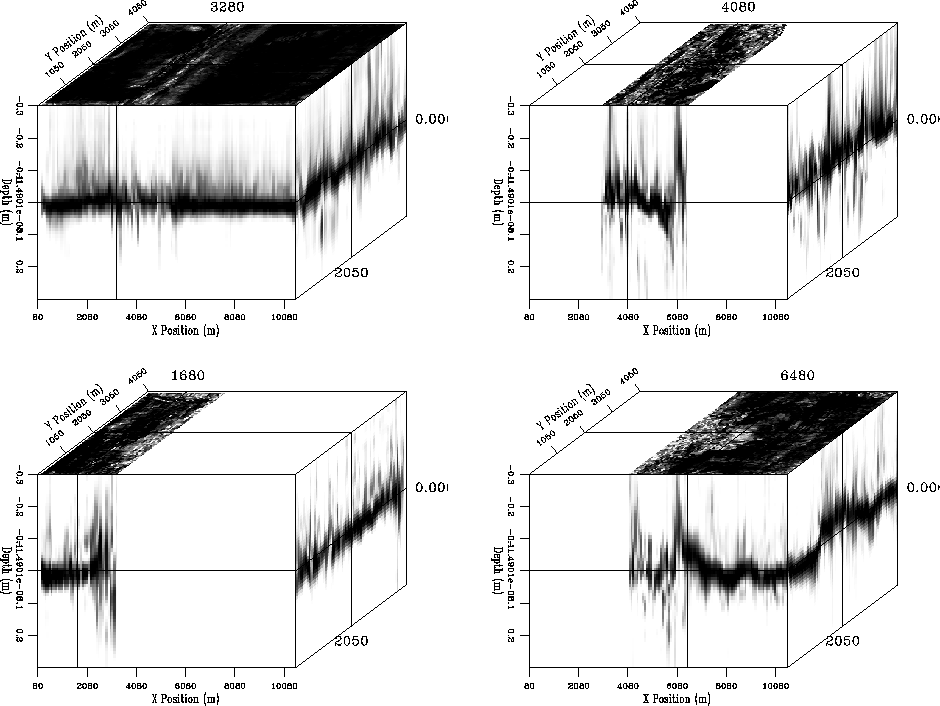




Next: Building the steering filters
Up: Clapp: 3-D tomography field
Previous: Data
From the initial migration I chose five reflectors to perform tomography
with (Figure ![[*]](http://sepwww.stanford.edu/latex2html/cross_ref_motif.gif) ). To constrain the upper
portion of the model I chose the sea bottom reflection.
2-D tomography tests Clapp and Biondi (2000) indicated
that largest error in the upper portion of the model was below the reflection
at 1600 m. As a result I chose this reflector along with the salt
top reflection and two reflectors on either side of the salt dome.
To handle the steering filter dip calculation more accurately,
I extend the reflectors on either side of salt artificially into
the salt.
). To constrain the upper
portion of the model I chose the sea bottom reflection.
2-D tomography tests Clapp and Biondi (2000) indicated
that largest error in the upper portion of the model was below the reflection
at 1600 m. As a result I chose this reflector along with the salt
top reflection and two reflectors on either side of the salt dome.
To handle the steering filter dip calculation more accurately,
I extend the reflectors on either side of salt artificially into
the salt.
elf3d.reflectors.vel0
Figure 3 Five reflectors
used in tomography superimposed on the initial migration image. Note
how two of the reflectors were extended into the salt to
create better smoothing directions for the steering filter.





Excluding the artificially created reflector portions, I then calculated
residual moveout along each of the reflectors (Figure ![[*]](http://sepwww.stanford.edu/latex2html/cross_ref_motif.gif) ).
Generally the second reflector showed little to no moveout errors
while the three below showed some moveout error, especially directly above
and the edge of the salt body.
).
Generally the second reflector showed little to no moveout errors
while the three below showed some moveout error, especially directly above
and the edge of the salt body.
elf3d.semb
Figure 4 Initial semblance errors
along the lower four reflectors used in tomography.










Next: Building the steering filters
Up: Clapp: 3-D tomography field
Previous: Data
Stanford Exploration Project
9/5/2000
![[*]](http://sepwww.stanford.edu/latex2html/cross_ref_motif.gif) ). To constrain the upper
portion of the model I chose the sea bottom reflection.
2-D tomography tests Clapp and Biondi (2000) indicated
that largest error in the upper portion of the model was below the reflection
at 1600 m. As a result I chose this reflector along with the salt
top reflection and two reflectors on either side of the salt dome.
To handle the steering filter dip calculation more accurately,
I extend the reflectors on either side of salt artificially into
the salt.
). To constrain the upper
portion of the model I chose the sea bottom reflection.
2-D tomography tests Clapp and Biondi (2000) indicated
that largest error in the upper portion of the model was below the reflection
at 1600 m. As a result I chose this reflector along with the salt
top reflection and two reflectors on either side of the salt dome.
To handle the steering filter dip calculation more accurately,
I extend the reflectors on either side of salt artificially into
the salt.

